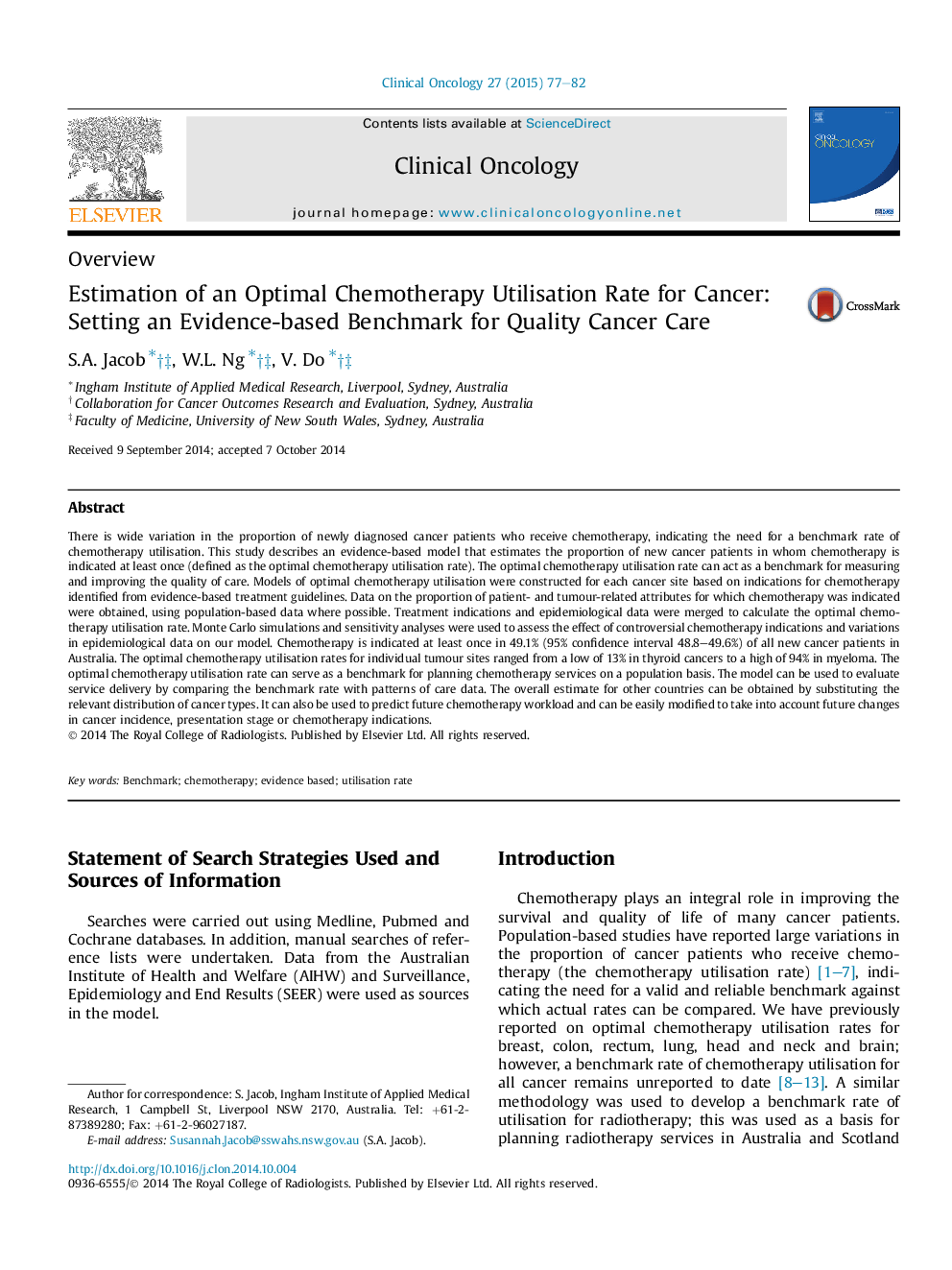| Article ID | Journal | Published Year | Pages | File Type |
|---|---|---|---|---|
| 5698394 | Clinical Oncology | 2015 | 6 Pages |
Abstract
There is wide variation in the proportion of newly diagnosed cancer patients who receive chemotherapy, indicating the need for a benchmark rate of chemotherapy utilisation. This study describes an evidence-based model that estimates the proportion of new cancer patients in whom chemotherapy is indicated at least once (defined as the optimal chemotherapy utilisation rate). The optimal chemotherapy utilisation rate can act as a benchmark for measuring and improving the quality of care. Models of optimal chemotherapy utilisation were constructed for each cancer site based on indications for chemotherapy identified from evidence-based treatment guidelines. Data on the proportion of patient- and tumour-related attributes for which chemotherapy was indicated were obtained, using population-based data where possible. Treatment indications and epidemiological data were merged to calculate the optimal chemotherapy utilisation rate. Monte Carlo simulations and sensitivity analyses were used to assess the effect of controversial chemotherapy indications and variations in epidemiological data on our model. Chemotherapy is indicated at least once in 49.1% (95% confidence interval 48.8-49.6%) of all new cancer patients in Australia. The optimal chemotherapy utilisation rates for individual tumour sites ranged from a low of 13% in thyroid cancers to a high of 94% in myeloma. The optimal chemotherapy utilisation rate can serve as a benchmark for planning chemotherapy services on a population basis. The model can be used to evaluate service delivery by comparing the benchmark rate with patterns of care data. The overall estimate for other countries can be obtained by substituting the relevant distribution of cancer types. It can also be used to predict future chemotherapy workload and can be easily modified to take into account future changes in cancer incidence, presentation stage or chemotherapy indications.
Related Topics
Health Sciences
Medicine and Dentistry
Oncology
Authors
S.A. Jacob, W.L. Ng, V. Do,
